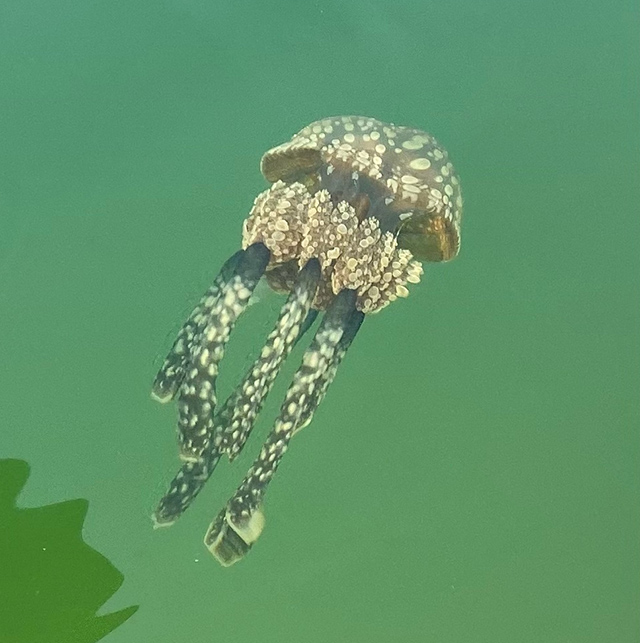| Mastigiidae () |
| 8 cm WD (male/unsexed) |
|
pelagic; marine |
| Indo-West Pacific: from South Africa north to Russia and east to Fiji. Tropical to temperate. |
|
Up to 8 cm wide, usually hemispherical, exumbrella with very fine granulations; gelationous substance firm; deep furrows between the 8 velar lappets (in each octant); mouth-arms about half as long as bell diameter, the simple upper portion one and a half times as long as the three-winged lower portion; each arm usually, but not always, terminates in a club-like filament, triangularin cross-section; numerous small, club-shaped cesicles between mouths; less than 10 canal-roots in each octant; rhopalar canals clender, usually with anastomoses. |
| Mostly in shallow waters during the day to allow its symbiotic zooxanthellae (where it derives its energy from) to bathe in sunlight. Mainly solitary. As the sun mainly influences its habits, it descends to lower parts of the water column when the sun sets. It gathers food such as zooplankton, phytoplankton, small invertebrates, and microbes using the oral arms of its mouth (Ref. 101744). |
|
Not Evaluated (N.E.) Ref. 123251)
|
|
|
Source and more info: www.sealifebase.org. For personal, classroom, and other internal use only. Not for publication.

